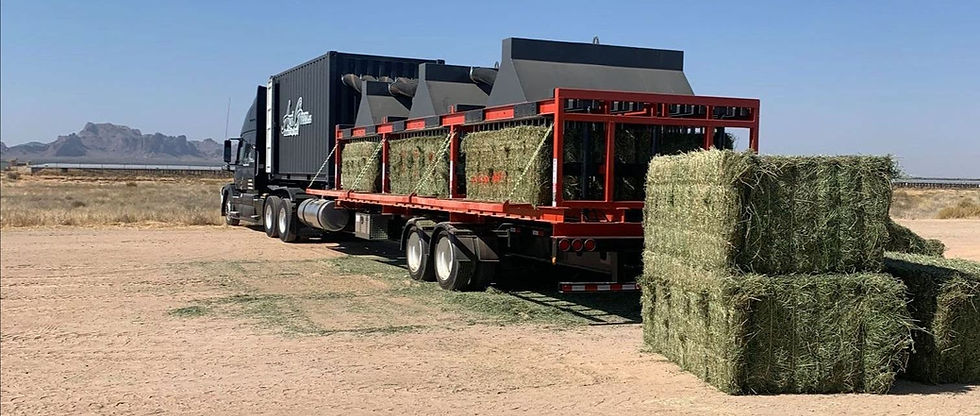Mastering the Art of Hay Drying with the Maximizer Hay Dryer
- Eva Gulbranson
- Aug 7, 2023
- 3 min read

Introduction
Revolutionize your haymaking operation with the cutting-edge technology of the Maximizer Hay Dryer. Adverse weather conditions can often pose challenges for hay producers, leading to baling hay at higher moisture levels due to limited drying opportunities. However, with the Maximizer Hay Dryer, you gain access to an excellent tool that efficiently dries hay and significantly improves its quality. In this article, we will explore the best way to dry hay, the drying process using the Maximizer Hay Dryer, and how it can elevate your haymaking operation. Moreover, we will answer crucial questions regarding drying time and determining hay readiness for baling.
What is the Best Way to Dry Hay?
The Maximizer Hay Dryer introduces a cutting-edge approach to hay drying by creating hot air and low humidity while maintaining high pressure. The result is a remarkable reduction in drying cycle time, taking only minutes to dry each bale. Optimal airflow through each bale quickly, efficiently, and consistently removes moisture. This accelerated process prevents mold growth and enables safe storage. By utilizing the Maximizer Hay Dryer, you can efficiently dry hay even during adverse weather conditions, ensuring that the hay retains its nutritional value and vibrant color.
How Long Does it Take to Dry Hay?
With the Maximizer Hay Dryer, the traditional waiting time for hay to dry naturally in the windrow is significantly reduced. The drying cycle takes a mere 10-20 minutes per bale. The innovative design of the dryer allows heated air to pass through 84 hydraulically-lowered spikes in each bale, evenly drying the hay. As one batch of hay is being dried, the next set of bales can be fed into the dryer, optimizing efficiency and productivity. After the drying process, the hay will have undergone an accelerated "sweat" that helps it cool down to ambient temperature within 24-48 hours, making it ready for storage.
How Do You Know When Hay is Dry Enough to Bale?
Determining the right time to bale hay is critical to preserving its quality and nutritional value. When using the Maximizer Hay Dryer, you can confidently bale your hay at higher moisture levels without worrying about your bales overheating. The Maximizer Hay Dryer eliminates this risk factor, ensuring safe storage and preserving the hay leaf and color. However, it's important to note that you can still create great bales at a dryer moisture level without the need to put your hay through the dryer.
By incorporating the Maximizer Hay Dryer into your haymaking process, you create a larger time window to bale all of your hay. This innovative tool becomes an invaluable addition to your arsenal, enabling you to tackle adverse weather conditions and efficiently dry hay that would have been challenging otherwise.
The Maximizer Hay Dryer as another tool in your belt, you can optimize your hay acreage, produce higher-quality hay, and propel your haymaking business into the future. Embrace the advanced technology of the Maximizer Hay Dryer to revolutionize your haymaking operation and take it to new heights.
Conclusion
The Maximizer Hay Dryer is a game-changer for hay producers, providing an advanced and efficient method to dry hay in adverse weather conditions. By utilizing this groundbreaking technology, you can bale hay at higher moisture levels and ensure rapid, consistent drying. The Maximizer Hay Dryer's exceptional design guarantees leaf retention, higher yields, and improved protein content, leading to superior-quality hay.
To optimize each acre and produce the highest-quality hay possible, the AG Maximizer Hay Dryer is the ultimate solution. To learn more about how the Maximizer Hay Dryer can revolutionize your hay making process, don't hesitate to contact our sales team at Contact Us. Embrace the future of haymaking and propel your business to new heights with the Maximizer Hay Dryer.




Comments